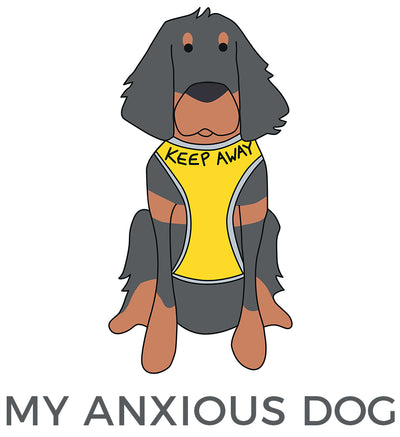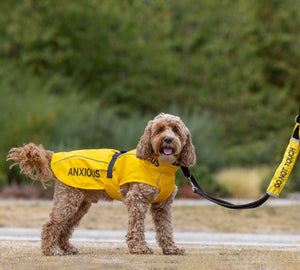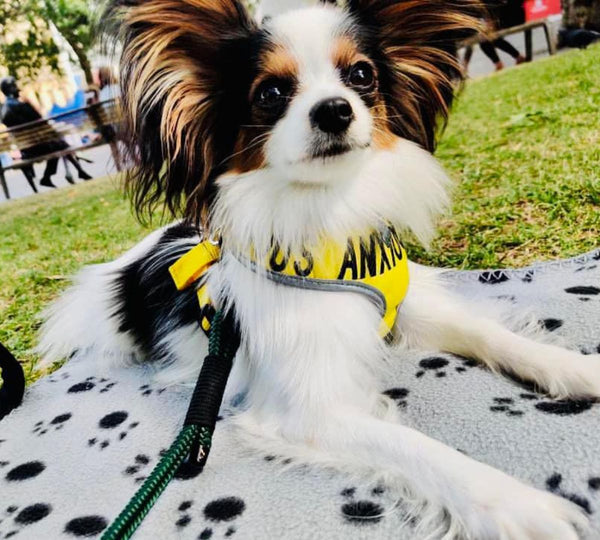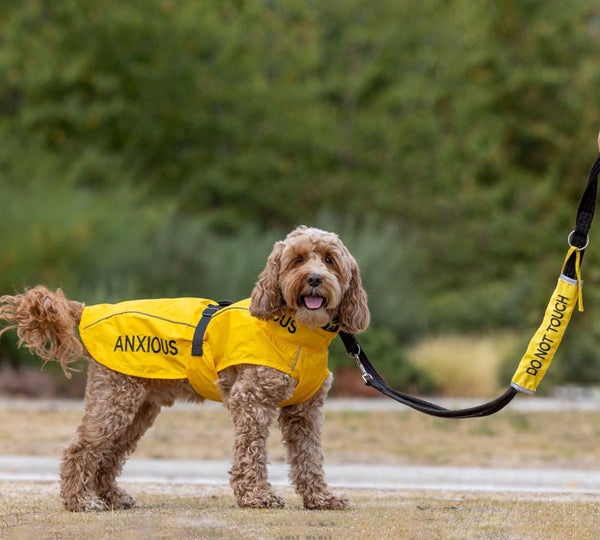Recognising the signs that your dog is becoming anxious, nervous or afraid can help you to manage exposure to their triggers so they feel more confident and relaxed.
In this blog, we’re going to explore the signs of anxiety in dogs and help you with some simple ways to calm your nervous dog down - so that life is more enjoyable for both of you.
Let’s get started!
Understanding what triggers your dog's anxiety
Understanding your dog’s triggers allows you to be one step ahead of the game. Learning the signs that your dog is becoming anxious and noting their triggers will help you manage your dog’s environment and experiences to keep them happy and calm.
Signs your dog is becoming stressed or nervous include:
-
Stiff or still body
-
Turning their head or body away from someone or something
-
Drooling, licking or yawning (when not sleepy)
-
Closed tense mouth
-
Blinking or narrowed eyes
-
Barking or whining
-
Lunging or growling
Frequent contact with things that make your dog nervous or anxious can add up, which in dog training terms is called trigger stacking.
When each stressful event adds to another, your dog can become more reactive and unpredictable. Your dog needs time to recover and decompress, so their stress levels can settle back down to baseline.
How to calm your nervous dog naturally
My own dog Bella can become very nervous around new people and other dogs. It was my experience with Bella that led me to set up My Anxious Dog, and here I’d like to share with you 5 ways that I’ve found very effective in helping Bella to feel calm and at ease.
1. Get your dog space from the things that worry them
Nervous dogs should be given the freedom and confidence to go out and enjoy the world as much as any other dog - if they want to! The biggest thing that helps a nervous dog to feel more confident around their triggers is space.
When your dog can get distance from the scary or frightening thing, they are able to relax and feel more at ease. With space, you can begin teaching your dog that they are safe and that there’s nothing to fear.
So how do you get your dog the space they need? Take a look at my lovely Bella standing on the beachside with a ball in her mouth.

In the image on the left, Bella looks naked to me! Without her yellow dog accessories she looks like an adorable cocker spaniel that people are going to want to come up to and fuss!
In the image on the right, Bella looks just as gorgeous, but her anxious dog harness and yellow lead do the talking for her and give her the space she needs.
The result: With her yellow dog gear on, Bella is more at peace. She can run and frolic on the beach, play with her ball and we know that people will keep their distance and respect her space. They’ll know to call their dog’s away and that makes Bella feel instantly more in control and at ease.
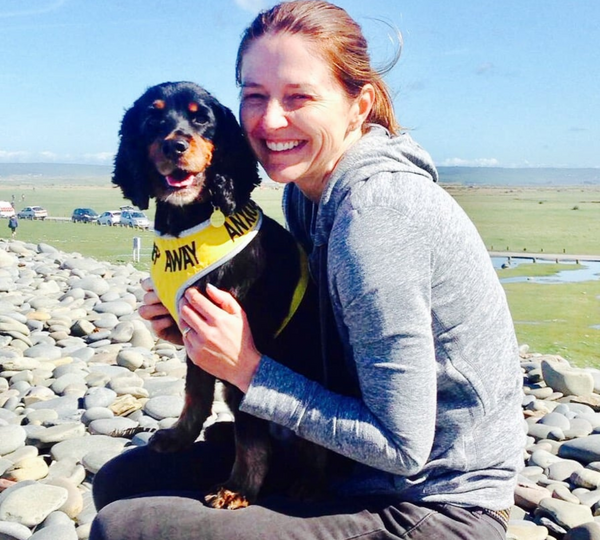
2. Teach your dog to focus on you
Once you’ve mastered giving your dog space from their triggers, you can begin to teach your dog that they can ignore things in their surroundings and focus on you when they feel nervous.
Your dog’s confidence levels will be higher, as they’ve had the reduced exposure to things that make them nervous - meaning they’re now more able to learn and focus!
Engage/disengage is a really great game/training exercise to use, and it’s pretty simple to follow.
The below video shows you how to teach your dog to engage/disengage - this is a great first step to helping your dog notice their triggers without reacting. You will need to ensure your dog has plenty of space from their trigger to get started.
Equipment needed:
You may also like to use a yellow space awareness lead slip which is more visible at a distance and can help you retain the space you need while training.
3. Secure dog fields
Secure dog fields are a nervous dog’s paradise! There are lots of them dotted around the country and they give you the opportunity to hire a private dog field where you can walk your dog in complete solitude!
Typically they are securely fenced and are managed to allow people (and their dogs) to get in and out without coming into contact with other people or dogs.

Hiring a secure dog field once a week or even once a month, gives both you and your dog some relaxed time outdoors to decompress and just enjoy yourselves… Worry free!
4. Plan your outings thoughtfully
Going out for days out with a nervous dog can be stressful. Typically you know your local walking spots well and feel at ease with where you can go without getting too close to other people or dogs.
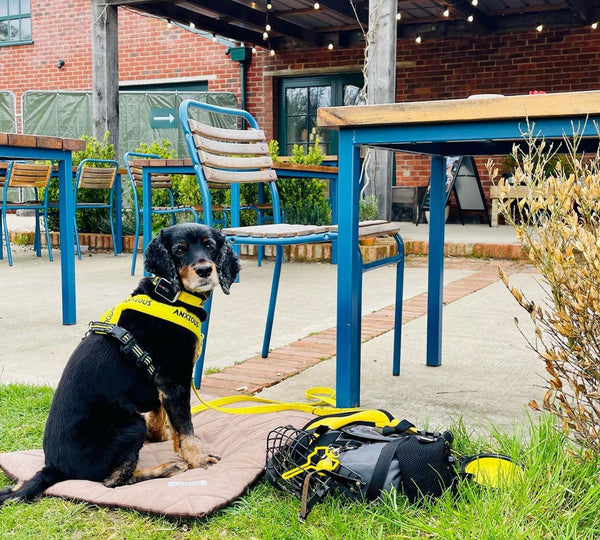
If you want to head out somewhere new or to go to a pub or cafe with your dog then it really helps to go prepared!
- Choose your seating carefully, and try to position your dog away from footfall to help them relax.
- Consider any visual blocks you can use such as tables, chairs or the layout of the venue to reduce your dog’s exposure to potential triggers
- Take a slow feeder or enrichment toy to keep your dog busy and focused on something positive
I highly recommend these sodapup enrichment mats - fill with dog friendly peanut butter, wrap it in a little clingfilm and your dog will be happy as can be! Licking is a naturally calming activity for dogs which will help your dog relax while you enjoy a meal or a drink with friends.
5. Massage to decompress
Lastly, I highly recommend giving your dog a massage to help them decompress and wash away their worries. Helping your dog to reset is an important part of keeping their nerves calm and stress at bay.
My dog Bella is now having sessions with a canine massage therapist but you can also spend time giving your dog a gentle massage of your own.

Watch your dog’s body language and follow their cues to ensure they’re enjoying it and simply spend some time together with no distractions. It’ll help you both relax.
